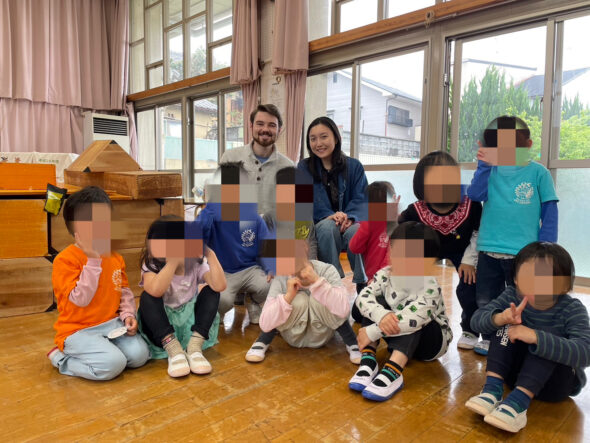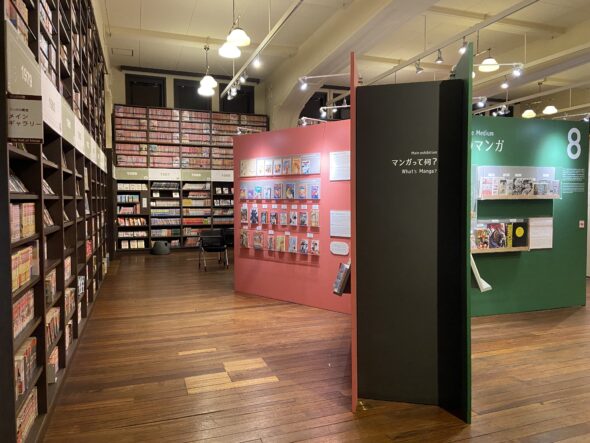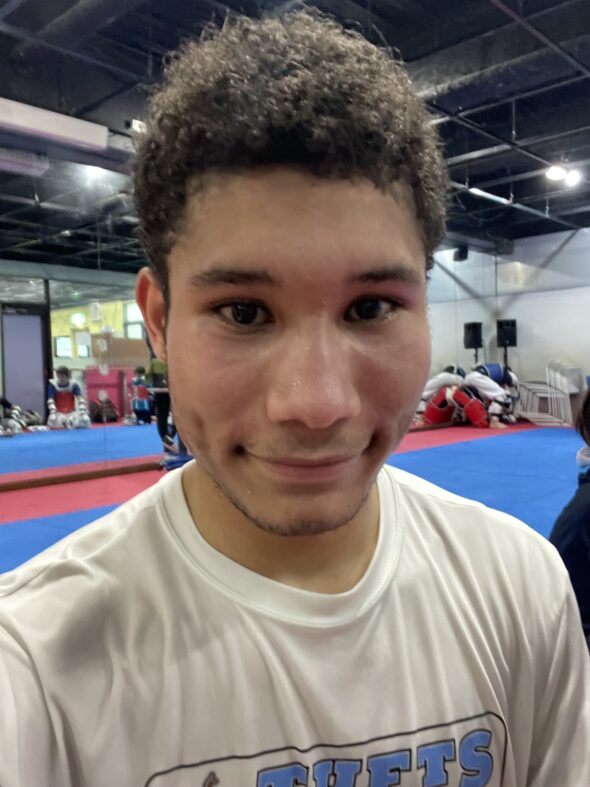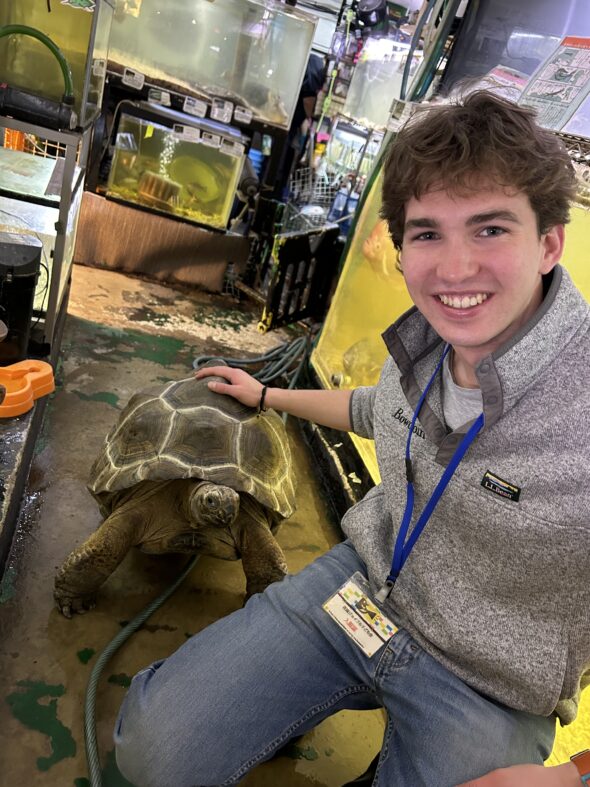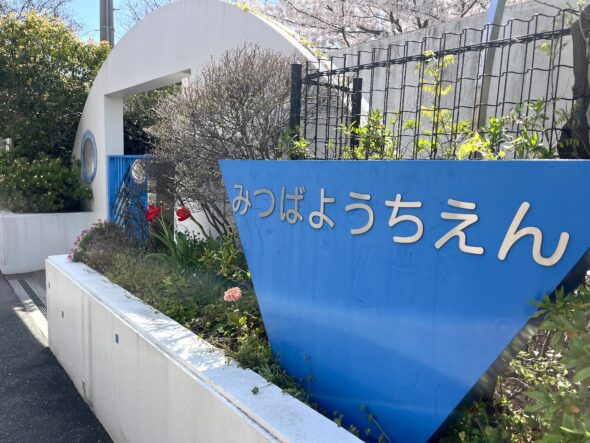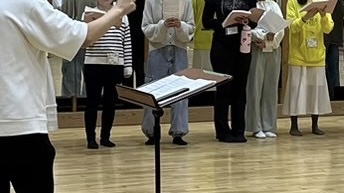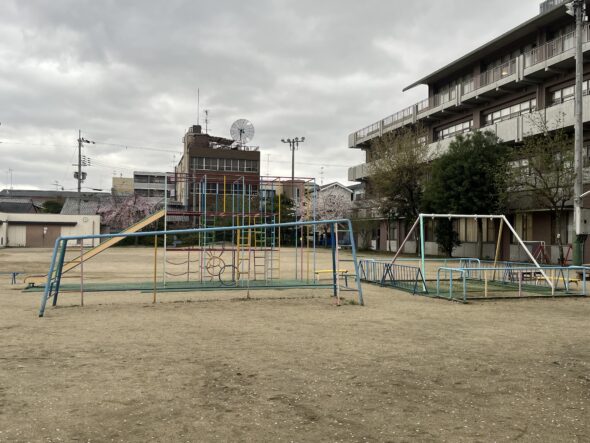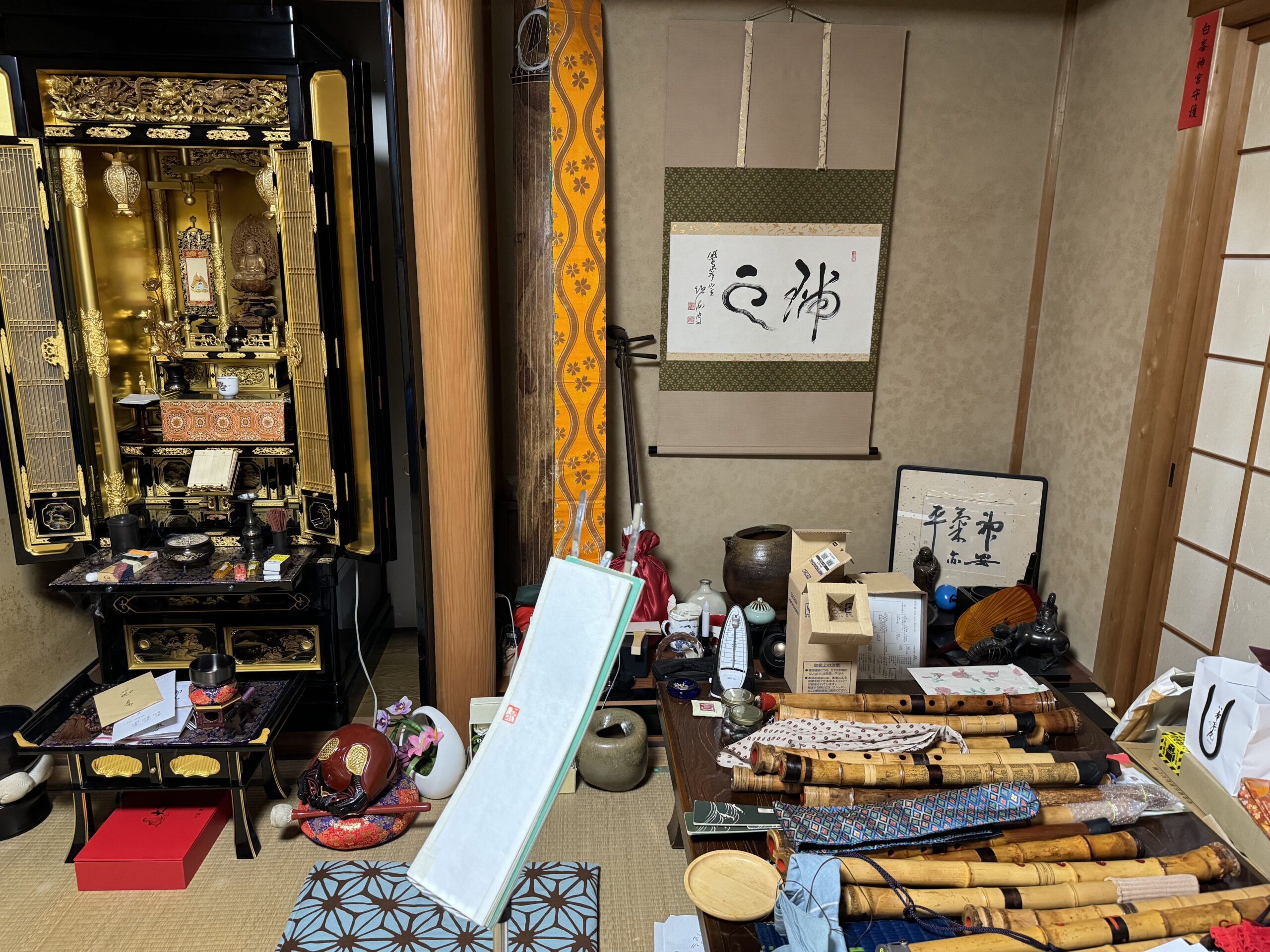
For my CIP, I took Shakuhachi lessons at a Shakuhachi players house. I met once a week for two hours, learned a few basic songs and performed at the Otsu traditional performing arts center with my sensei as the culminating event.
The shakuhachi is a difficult instrument and you will most likely need to practice at least a little bit out of lessons. However many of the things that makes the shakuhachi difficult are what make a unique and interesting instrument. For example, the position of your head or how much you are covering a hole will change the pitch of a note, which both allows you to go between pitches seamlessly and demands a greater level of precision on your part to play specific pitches.
My biggest worry going into this was that pursuing an instrument in one-on-one setting means I won’t get to learn and experience Japanese culture as I would interacting with a larger group of people via volunteering, but that wasn’t the case. I learned a lot not just about Japanese music concepts , but also about Japanese ways of teaching and learning. The relationship between me and my sensei was much more personal and extended out of lessons in a way that was different from any music tutors I had learned before. I was very much blown away by his kindness
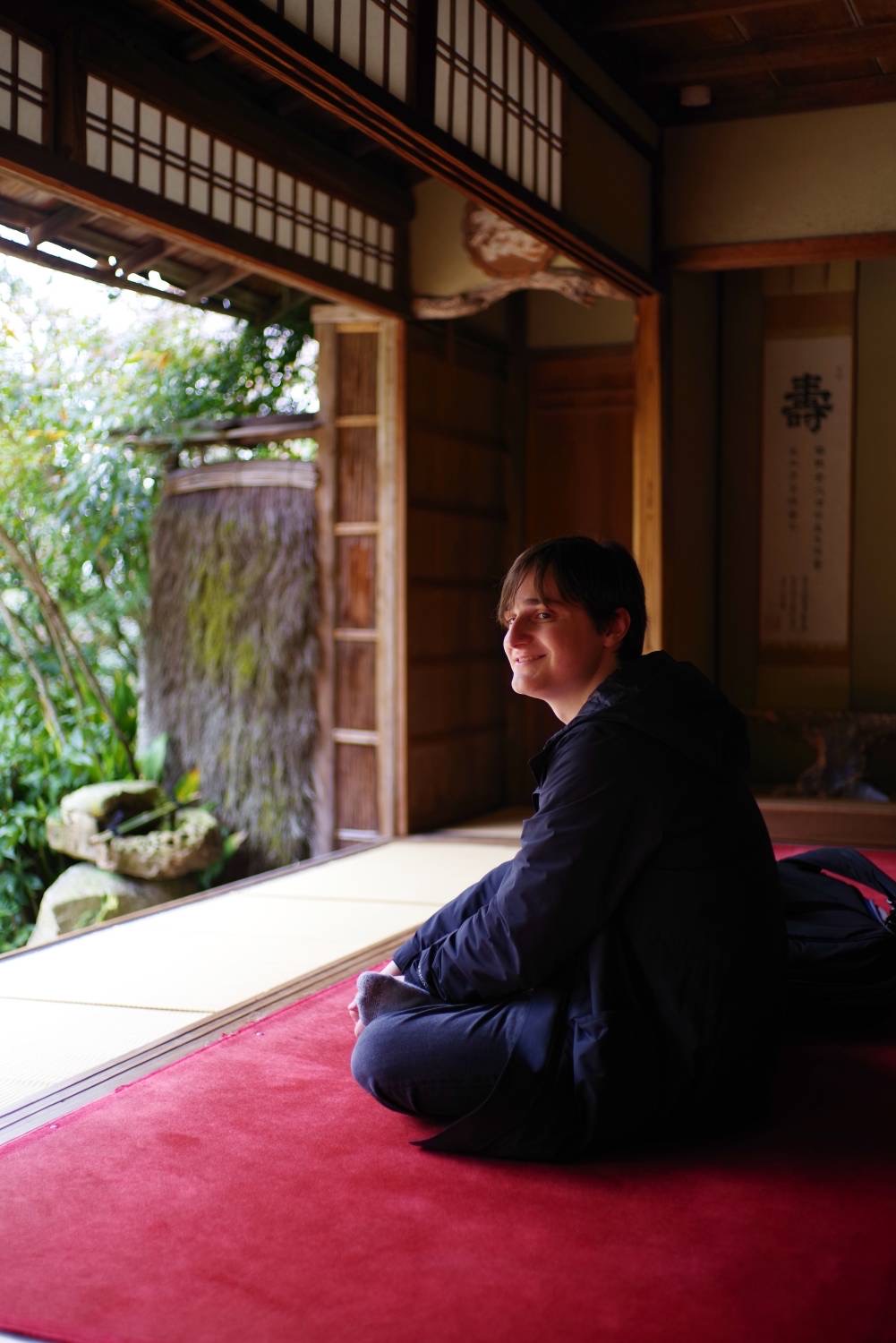
picture Sensei took of me when we visited a temple

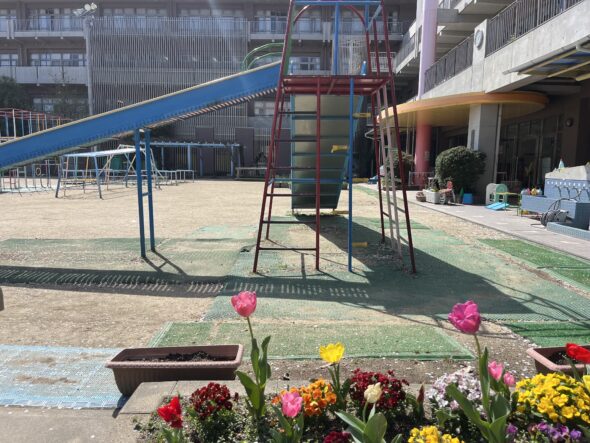
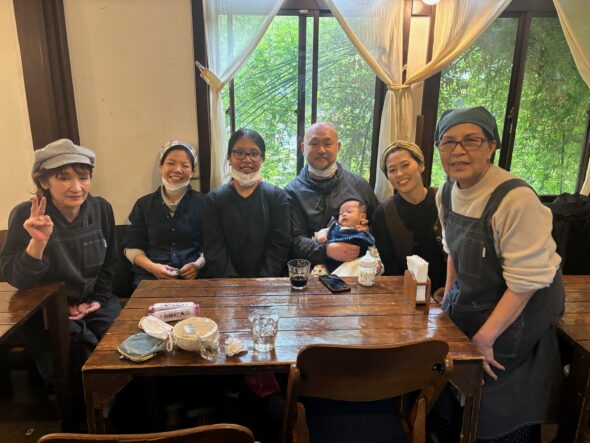 The Bazaar Cafe’s mission is to create and provide a safe space for people who are part of minority groups (sexuality, religion, age, nationality, etc.) by giving them a space to express and share their values. The people who work at the Bazaar cafe are often those who are unable to find employment in other places, due to various prejudicial reasons. Through volunteering at the Bazaar Cafe, I have met amazing people with different walks of life that have all been very accepting and interested in my individual ideas and values. By listening to their discussions about the cafe’s next steps (which include an effort to reduce the distance between college students and conversations about alcohol-related issues) at the beginning of the semester and then manually helping in the kitchen during the second half of the semester, I have been able to connect with a lot of the staff, and felt like I have contributed to the work done in the kitchen of this small but mighty cafe. Before beginning my CIP time at the Bazaar Cafe, I was warned to not be shy and instead be open to talking at the cafe. As someone who is nervous to speak in Japanese to Japanese people in fear of making mistakes, I also advise anyone who decides to volunteer at the Bazaar Cafe in the future to allow yourself to try and be open to expressing yourself. The cafe became a place where I could practice the language with locals without fear of judgment.
The Bazaar Cafe’s mission is to create and provide a safe space for people who are part of minority groups (sexuality, religion, age, nationality, etc.) by giving them a space to express and share their values. The people who work at the Bazaar cafe are often those who are unable to find employment in other places, due to various prejudicial reasons. Through volunteering at the Bazaar Cafe, I have met amazing people with different walks of life that have all been very accepting and interested in my individual ideas and values. By listening to their discussions about the cafe’s next steps (which include an effort to reduce the distance between college students and conversations about alcohol-related issues) at the beginning of the semester and then manually helping in the kitchen during the second half of the semester, I have been able to connect with a lot of the staff, and felt like I have contributed to the work done in the kitchen of this small but mighty cafe. Before beginning my CIP time at the Bazaar Cafe, I was warned to not be shy and instead be open to talking at the cafe. As someone who is nervous to speak in Japanese to Japanese people in fear of making mistakes, I also advise anyone who decides to volunteer at the Bazaar Cafe in the future to allow yourself to try and be open to expressing yourself. The cafe became a place where I could practice the language with locals without fear of judgment.